Welcome to Ceramic Review
Ceramic Review is the magazine for contemporary and historical ceramics, ceramic art and pottery.
Ceramic Review Issue 328
July/August 2024
Ceramic Review is the magazine for contemporary and historical ceramics, ceramic art and pottery.
July/August 2024
Rachel Grimshaw sculpts ceramic forms that defy the nature of the material. Natalie Baerselman le Gros finds out more
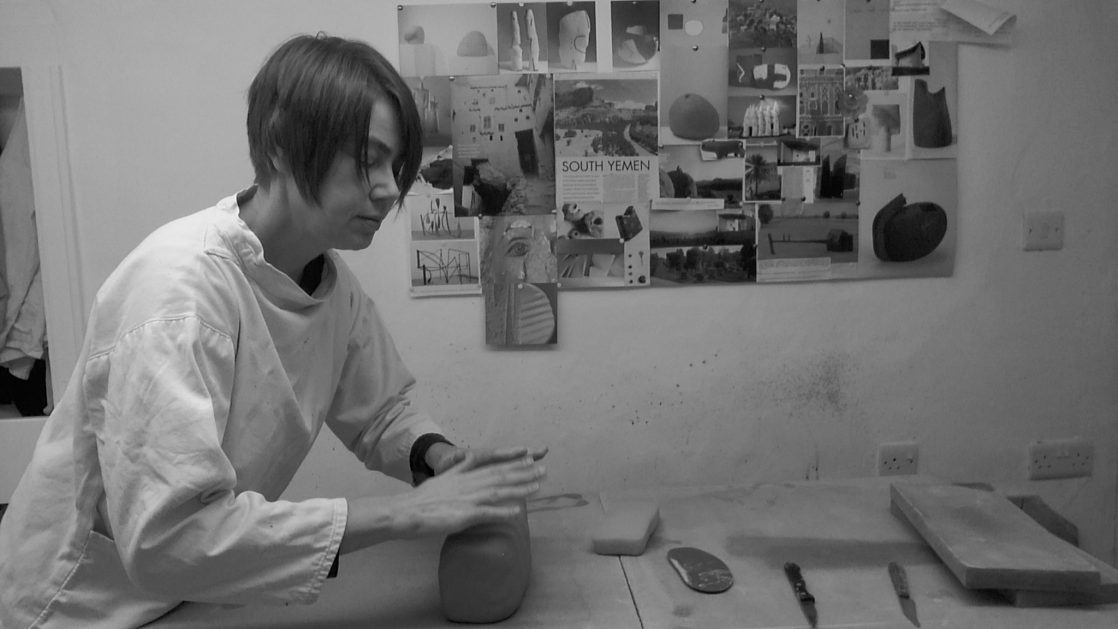
Rachel Grimshaw describes herself as a ceramic sculptor, keen that the qualities of her work are recognised as sculptural over any associations with pottery or vessel-making. Simply put, she is best known for lightly textured, carefully coloured, solid blocks of clay – but this description does not do justice to the lively plasticity that she gives her humble forms.
Through deft application of line and slice and dint to the surface and shape, her vocabulary of mark-making suggests a between-ness of states. Fired solid yet appearing contrary, Grimshaw’s shapes maintain a slow-motion kinesis, reminiscent of a non-Newtonian fluid, both liquid and solid. In doing so, her works challenge the given perceptions of clay, both in their literal solid-ness and subsequent appearance. She enjoys working against ceramics preconceptions, in stoneware but particularly in porcelain, contradicting the lightness, fragility and translucency of the material.
EARLY EXPERIENCES
Grimshaw recalls a very free and creative childhood. Her first experience of clay was making little pots from the clay in the nearby riverbed. Her mother was an art teacher who attended evening classes in ceramics, to which she would tag along in the school holidays. ‘I remember making a little clay nativity, the figures were too large to fit in the crib, but I just made them fit, leaving lots of finger-marks in the clay,’ she explains.
At school, she also remembers occasional lessons in ceramics, in particular making a clay dinosaur: ‘It was a very horizontal dinosaur as the clay couldn’t hold up the weight of its head.’ An early experience of the technical challenges of the material.
When it came to choosing her path in education, attending art school seemed the natural thing to do. Grimshaw undertook an Art Foundation course at St Helens College for Art and Design in 1986, where she won the award for student of the year. She describes the college as having a very good ceramics department. Her tutor gave her books on Alison Britton and Elizabeth Fritsch that sparked an early interest in slab building.
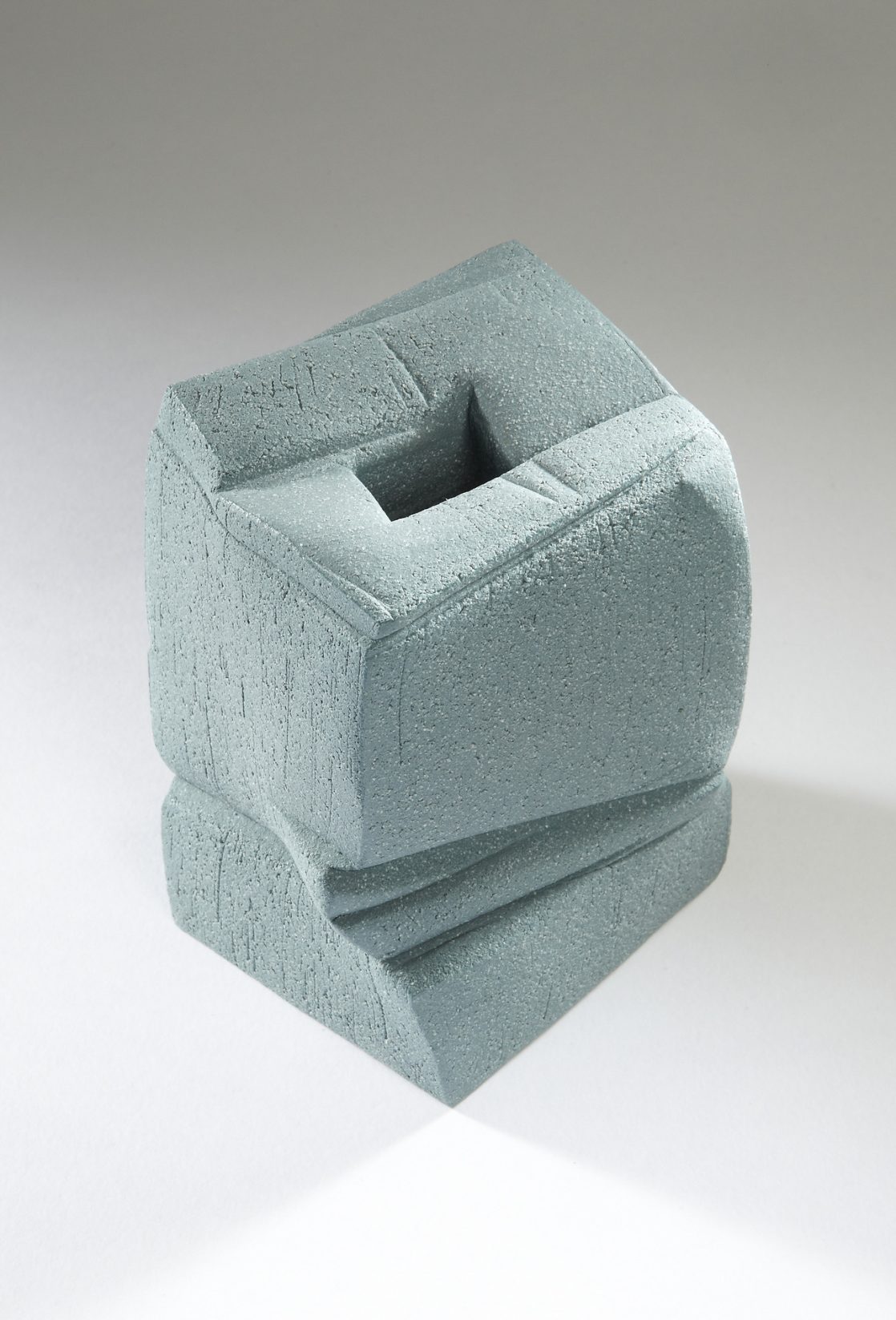
Grimshaw then went on to complete a BA at Manchester Polytechnic (1987-90) in three-dimensional design, specialising in Interior Design – purposely choosing not to study ceramics. ‘I felt it would be too restrictive,’ she explains. ‘I wanted a course where I could do lots of different things, focussing on interior design meant I could work with furniture, lighting, textiles and ceramics.’ The BA featured a series of six-week elective pathways in material studies, again wanting to broaden her areas of study, Grimshaw chose wood and metal.
Her interior design studies led her into a career in an architectural practice, but she also returned to St Helens, where she had completed her Art Foundation, to undertake evening classes in ceramics. She started out making the slab-built vessels she felt she never got to make during her foundation, following continued inspiration from Britton and Fritsch. In time, Grimshaw saved up for a kiln and in 1993 she converted a room in her house into a studio, making her artistic ceramic practice as much a part of her life as her interior design work.
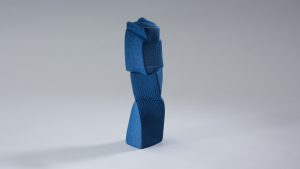
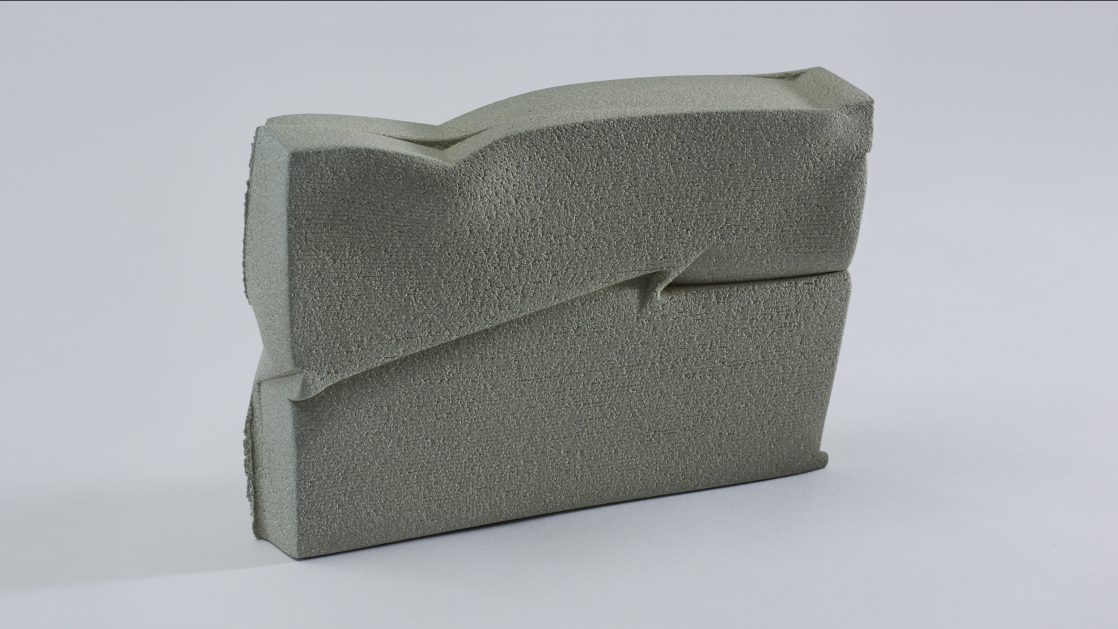
INSPIRATIONAL MAKERS
In 2001, Grimshaw’s slab-built works were included in a group exhibition at the Shipley Art Gallery. The curator, recognising she had not undertaken any formal ceramics training, encouraged her to enrol in a master’s degree course to further develop her practice, and, in 2006, she began a part-time MA in Ceramics at the University of Central Lancashire, Preston.
Among the tutors was ceramicist David Binns, whose work appealed to Grimshaw for its abstract quality: ‘He recognised the sculptural potential in my work,’ she reveals. Her thesis focussed on the purism of pots and their architectural potential, within which she researched the work of contemporary ceramic artist Ken Eastman and Hungarian artist Sándor Kecskeméti, who Grimshaw travelled to Hungary to interview.
Kecskeméti’s work has an architectural approach to sculptural ceramics, working with solid clay forms constructed in a totemic fashion. Inspired by this, Grimshaw began to contemplate the solid form. She says of her slab-built work at this time: ‘It began to feel like I was pushing the clay to do things it didn’t want to do, flat shapes and sharp edges’.
Instead, she wanted to achieve a feeling of balance or an ‘in-between-ness’, somewhere between freedom and control, the point between human intervention and a visceral sense of clay’s clay-ness. She was inspired also by the works of Irene Vonck, an Irish artist that studied in Amsterdam, creating sculptures that perfectly embody this liminal quality, something Grimshaw calls ‘the dance between maker and material’.
MAKING PROCESS
To anyone that knows anything about pottery, the idea of firing solid clay objects is tipping the already heavily weighted scales of risk even further from the fortunes of the potter. Grimshaw’s technical ability has grown through continuous rounds of experimentation, advice, failure and success into a carefully metered and monitored drying and firing schedule for her works. This begins with a process of serious wedging, for air bubbles in any clay work can spell disaster, and a precise amount of grog for her stoneware works. Through experimentation she states porcelain has a maximum capacity, but the grog in her stoneware allows those pieces to be bigger in scale.
Grimshaw adds what cannot justifiably be described as decoration to her forms, but perhaps is better referred to as texture, or gesture, or movement, that energise her works beyond blocks of clay. These cuts, folds, scrapes and impressions lend the work a kinetic animation, as if slumped after being dropped from a height, or teetering on the edge of an imminent fall. They also maintain the clays plasticity after firing, retaining a visual plump softness that is betrayed by its fired hardness. She does this using mostly found objects, often timber as ‘it is able to press into the clay and come away, absorbing just the right amount of water and not sticking’.
She recalls her 2017 residency at C.R.E.T.A studios in Rome, finding a piece of wooden window frame, appropriated from a nearby carpenter’s workshop. This is joined by tools such as a gnocchi press, a Japanese pottery tool for making circles, or just sticks with interesting ridges. Conversely, for porcelain, she uses plastic chopping boards to create texture, working better than timber on the sticky material. Grimshaw describes herself as a ‘magpie for textures’.
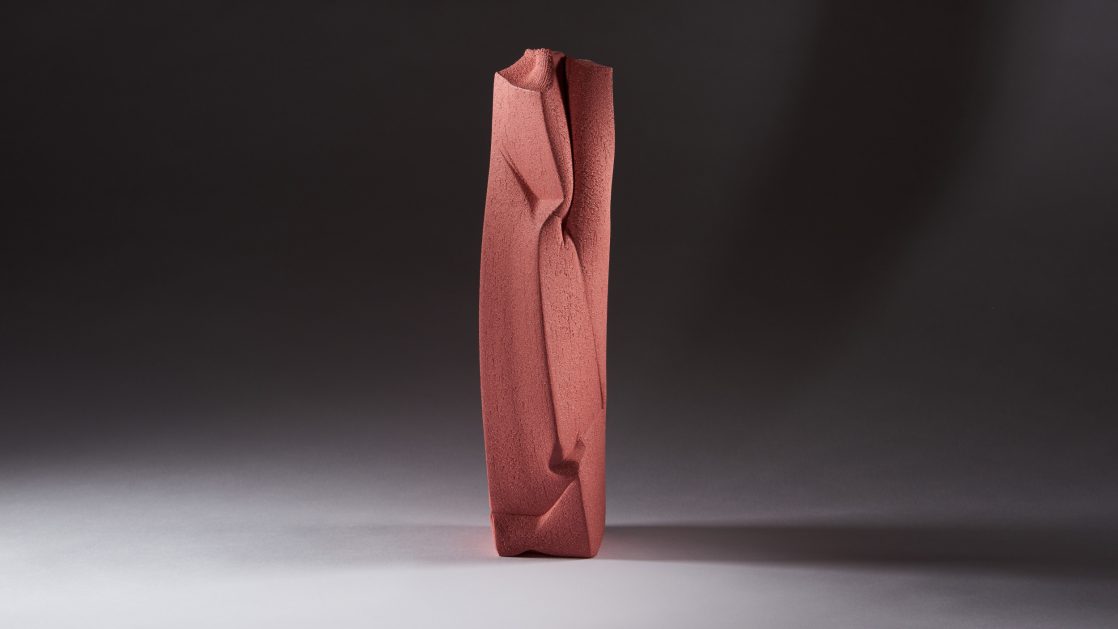
After a carefully monitored drying period of at least two weeks, but more comfortably three, the works are fired. She has worked out the precise temperature at which to fire her porcelain to achieve a desired sheen, rather than shine, at 1205°C. And for stoneware, a very slow three-day firing up to 1285°C with a 45-minute dwell. ‘I enjoy pushing the material to the outreaches of what it can do but stopping before it goes too far, before it collapses… that tension between feeling in control and the actual lack of control,’ she states.
For Grimshaw a typical day in the studio begins straight away with clay. She occasionally sketches but not on a day-to-day basis and not as a beginning to her clay work, she sees this as more of a recreational task away from the studio. She recalls Ken Eastman speaking on the parameters he set himself in his practice, ‘today I am going to make something Xcm high’, and she works in a similar way. She believes defining boundaries allows for greater freedom, that having nothing to push against is more constraining to creativity. She says studio days are another dance, ‘between knowing what is going to happen and what could happen’.
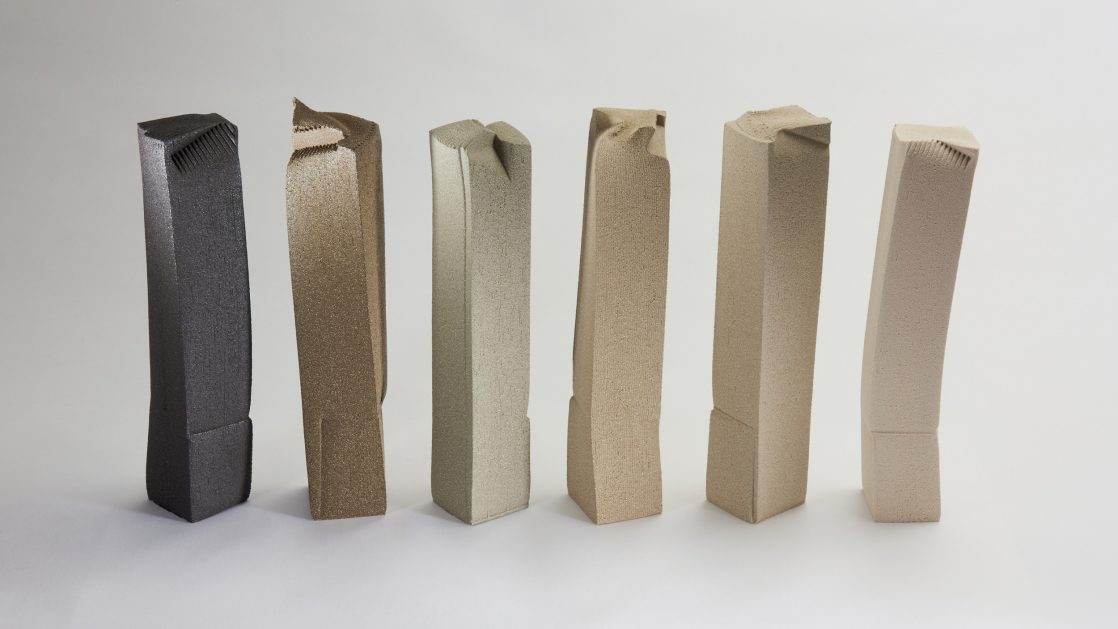
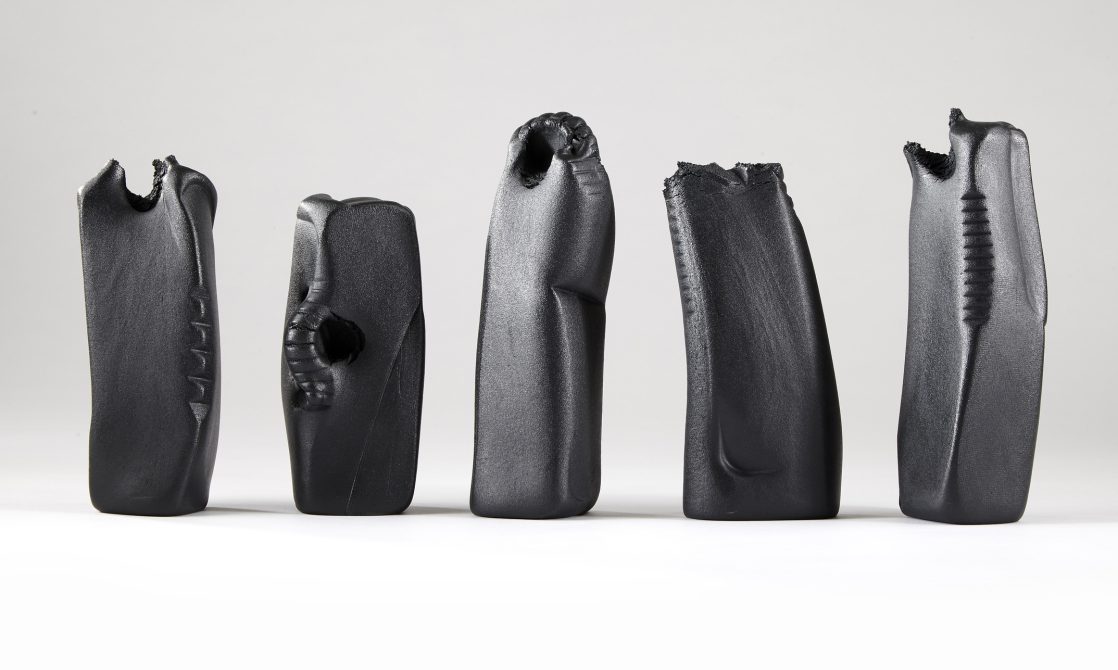
FACING CHALLENGES
Grimshaw begins with an approximate idea of form, colours and the tools she will use, particularly if working on a series of objects. She describes her series as like working on a musical riff or returning to a musical refrain: ‘Each time you go back it is slightly different, each piece developing on from one to another’, seeing how far she can push the ceramic melody. She believes an artist must have the courage to stop and rethink if something isn’t working but she often allows her ceramic pieces to mull, returning to them over a few days before committing to any change or abandonment.
For Grimshaw success is a sixth sense. ‘It is an instinct that is difficult to articulate,’ she explains. ‘I want it to be different from every angle, to sing, be animated but pared back, reduced to a bare minimum but have energy, something dancing.’ The challenges to achieve this are just as ethereal and difficult to pin down, a piece can be touched wrong, or too many times, or just have too many ideas. To Grimshaw these challenges are far greater than any practical trials in her work.
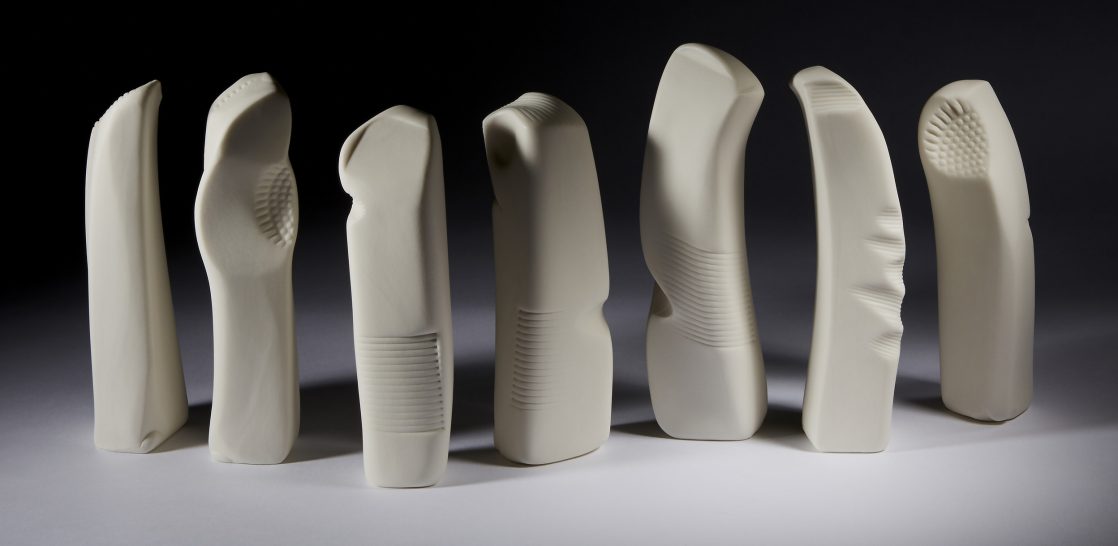
She is an artist of few words with regards to her work – ‘clay sculpture is how I communicate’ – but a recent Instagram post belies her manifesto: ‘To make the clay sing. To make the form ping. To lead the eye round and around. Movement in stillness contradict and respond, subvert and pare back. To reduce to the absolutely necessary, never before seen. Singular and unrepeatable; confident forms commanding attention.’
It seems her language carries as much poetry as her sculptures and her main aim outside of the artistic intention for each work is for it to be more widely seen: ‘Otherwise it is a conversation with one, I want to have that conversation further, a conversation rather than a monologue.’
For more details visit rachelgrimshaw.co.uk; @rachel_clay_sculpture